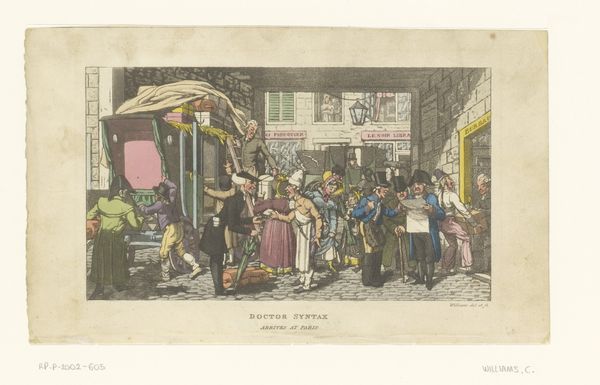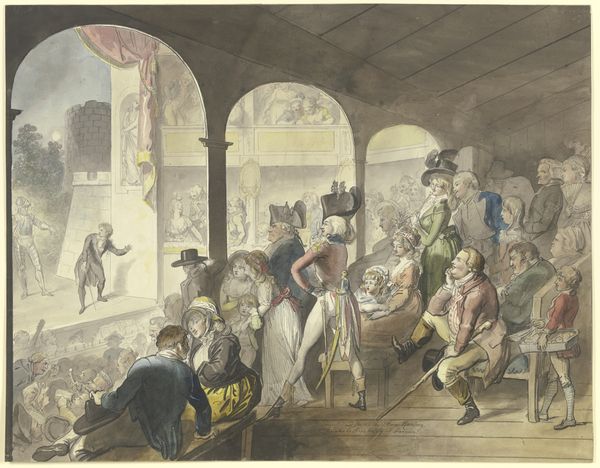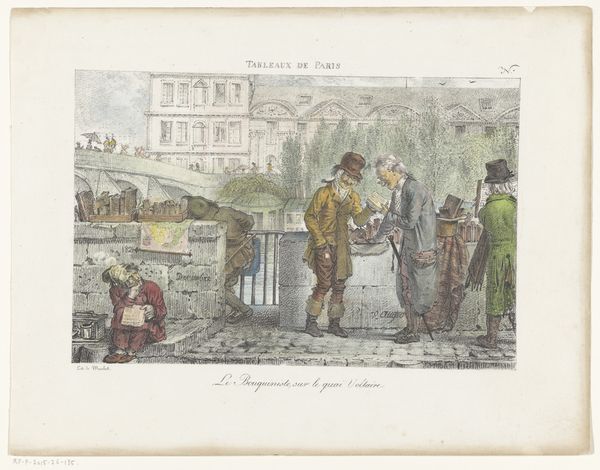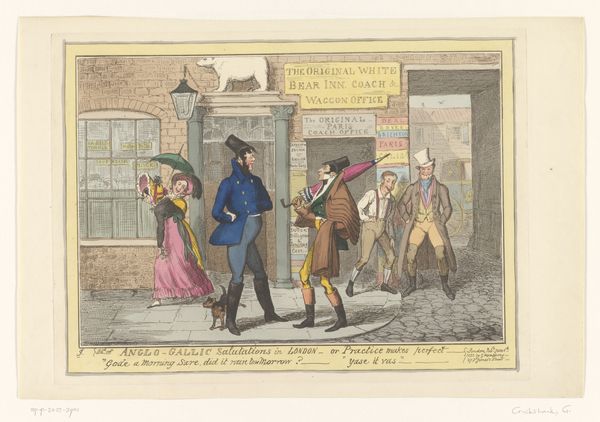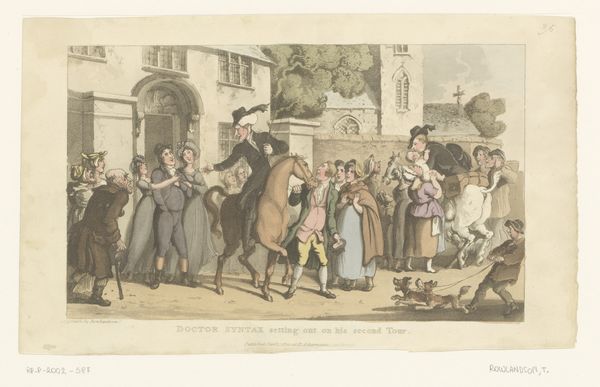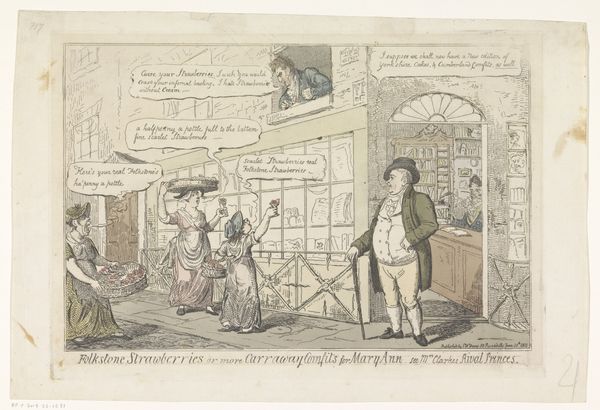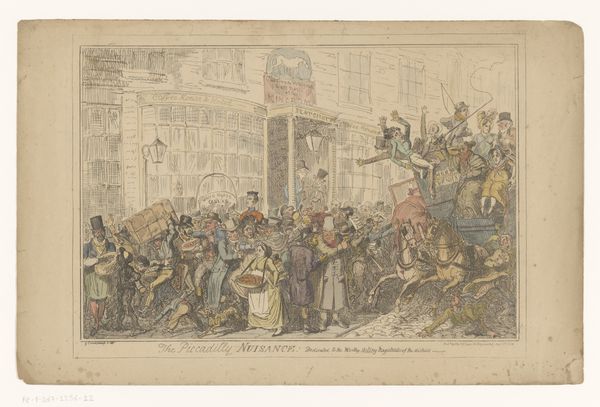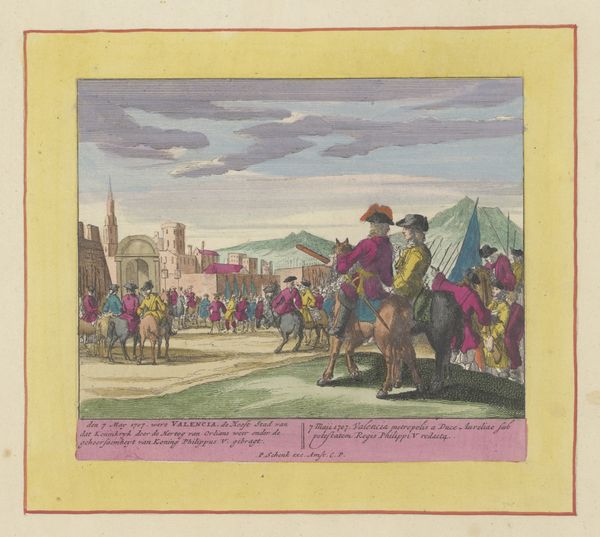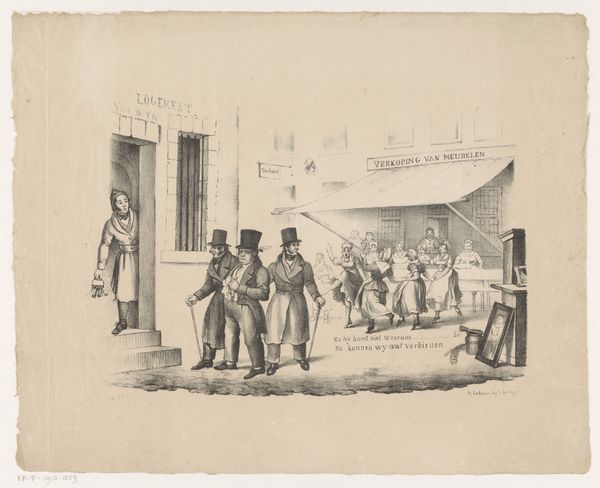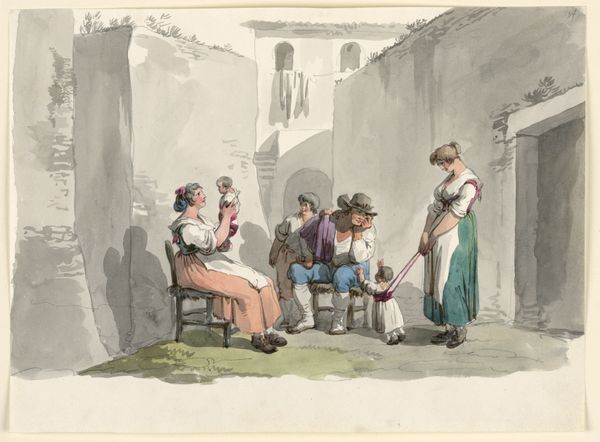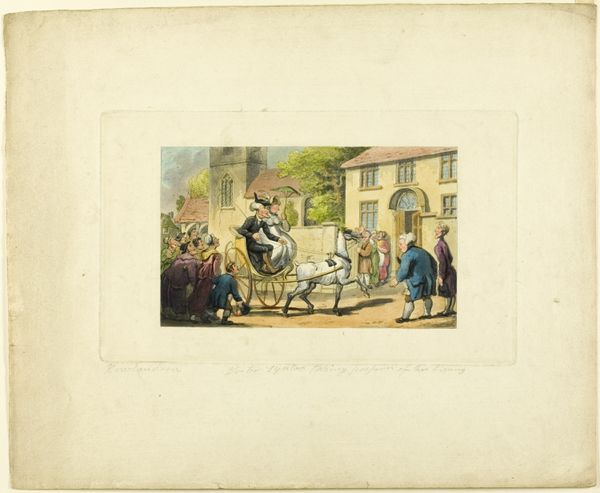
print, poster, engraving
#
portrait
# print
#
caricature
#
dog
#
traditional media
#
figuration
#
romanticism
#
line
#
cityscape
#
genre-painting
#
poster
#
engraving
Dimensions: height 260 mm, width 350 mm
Copyright: Rijks Museum: Open Domain
Curator: Welcome. We're looking at "Twee Engelsen in Parijs," or "Two Englishmen in Paris," a print made by George Cruikshank, possibly between 1822 and 1826. It's currently held at the Rijksmuseum. Editor: Immediately, I see a clash of styles. There's a forced gaiety, a sort of garish caricature in the figures, but set against this drab city backdrop. It speaks volumes, even before we unpack its historical context. Curator: Let's unpack, then. Cruikshank was a master of caricature. Note the exaggerated features of the two Englishmen, their corpulence, the affected handshake. Consider, too, the sharp lines of the engraving itself, the way he renders textures to amplify the figures' postures. It's almost theatrical, don’t you think? Editor: Absolutely theatrical, in that it reflects the stage of post-Napoleonic Europe. These aren't just random Englishmen, they embody British cultural dominance asserting itself, almost mockingly, in the heart of Paris. It reads as a commentary on class and national identity through a very colonial lens, made stark by the city in the background Curator: And Paris becomes another character through the depiction of architectural details and public notices in the image's composition. Structurally, notice how the figures are framed within this urban space; it’s not a backdrop but integral. The light and shadow create almost a stage-like dimension in how one can walk into or away from it. Editor: That 'stage' serves to highlight the tension, right? This isn't a welcoming embrace, it's a performance. "Commong porty wous munseer?" reads the caption, highlighting the linguistic and cultural divides that become weapons of class and nationalism, even with an enthusiastic handshake. Curator: Agreed, the linguistic element, literally printed below the figures, solidifies Cruikshank's perspective through a formalized observation. What strikes me, and is characteristic of Cruikshank, is how the exaggerated gestures are balanced with highly detailed background elements—offering a complexity beyond pure satire. Editor: Which transforms simple satire into social critique, pointing to enduring anxieties about power, representation, and performativity that continues today, through new colonial lenses, of course. I find it telling that we can still read into these tropes. Curator: A resonant artwork indeed; his craftsmanship is clearly visible while being equally culturally profound. Editor: Exactly. It’s unsettling and that's where its lasting value resides for me.
Comments
No comments
Be the first to comment and join the conversation on the ultimate creative platform.
